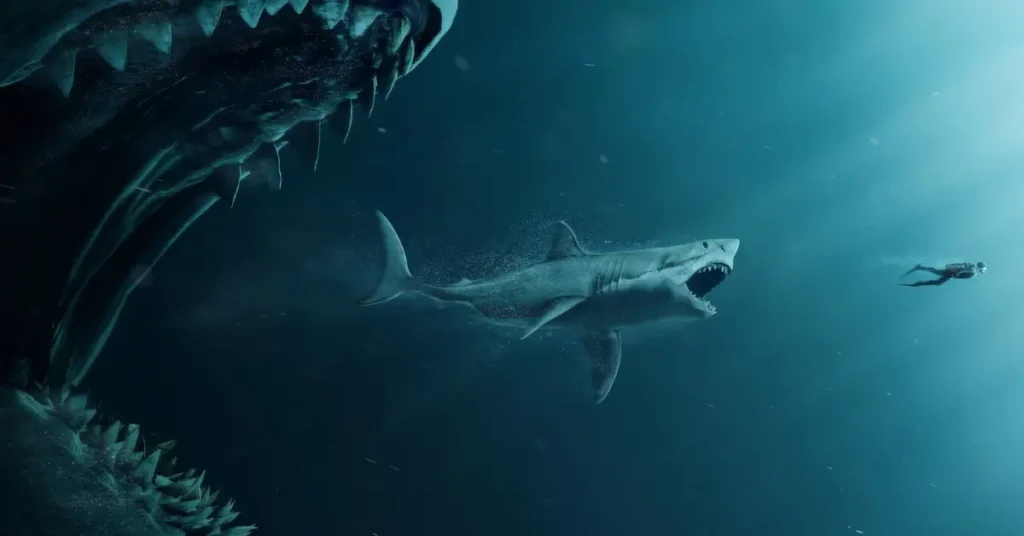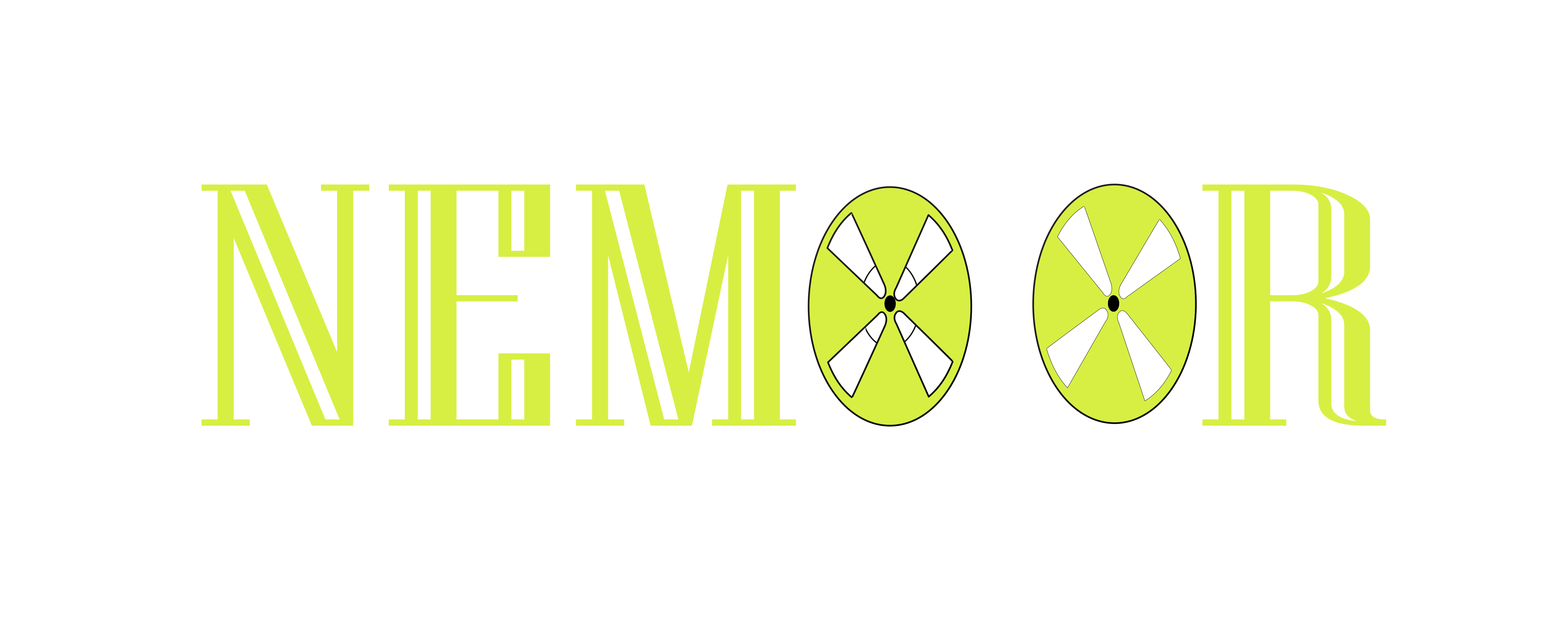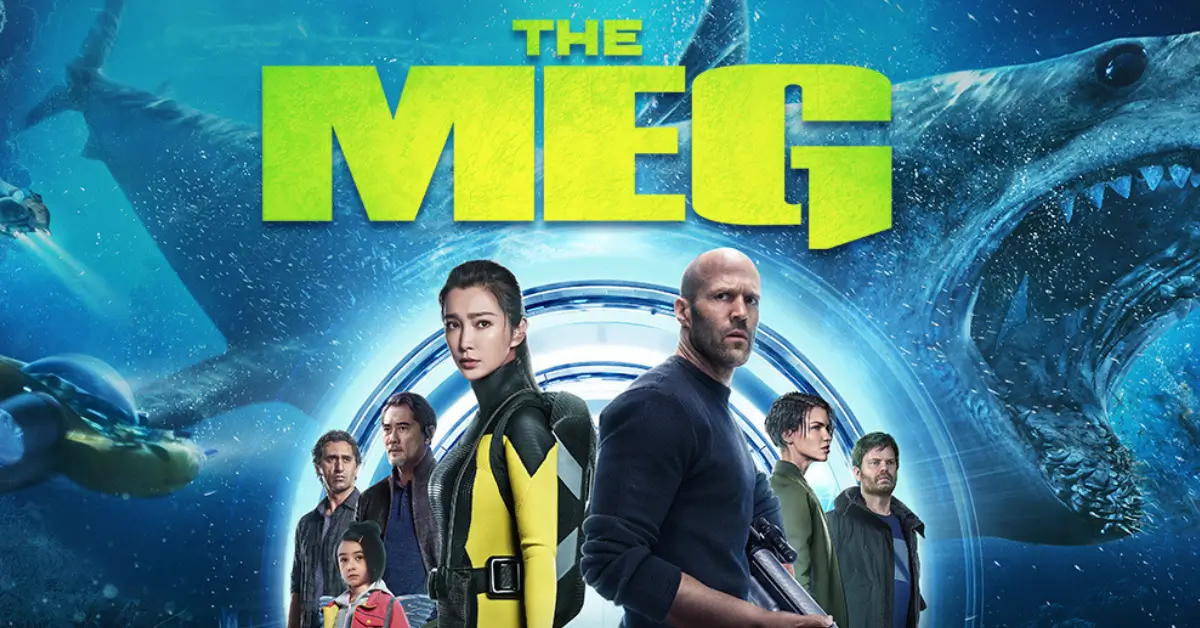Depths of Trauma: Mental Health Themes in ‘The Meg’
Beneath the surface of The Meg‘s monster-movie thrills lies a surprisingly nuanced exploration of psychological trauma, survivor’s guilt, and recovery. While audiences may flock to this film for its spectacular sequences of a prehistoric megalodon shark terrorizing modern waters, the narrative actually anchors its action in a compelling character study of individuals confronting both external and internal monsters. This analysis examines how this science fiction thriller uses its high-concept premise to explore legitimate mental health themes while delivering summer blockbuster entertainment.
Thank you for reading this post, don't forget to subscribe!Basic Film Information
Title: The Meg (Full title: The Meg: Awakening)
Release Date & Production Year: August 10, 2018
Director: Jon Turteltaub (Known for adventure films including “National Treasure”)
Screenwriters: Dean Georgaris, Jon Hoeber, and Erich Hoeber (Based on the novel “Meg” by Steve Alten)
Main Cast & Characters:
- Jason Statham (Jonas Taylor) – Former rescue diver haunted by a traumatic failed mission
- Li Bingbing (Suyin Zhang) – Oceanographer with protective instincts and risk assessment challenges
- Rainn Wilson (Jack Morris) – Billionaire exhibiting narcissistic traits and denial mechanisms
- Ruby Rose (Jaxx Herd) – Engineer with implicit trauma history reflected in emotional guardedness
- Winston Chao (Dr. Minway Zhang) – Scientist balancing intellectual curiosity with protective instincts
- Cliff Curtis (James “Mac” Mackreides) – Operations manager who believes in Jonas despite others’ doubt
Genre: Science fiction action thriller
Awards: No major awards; nominated for several visual effects awards
Runtime & Rating: 113 minutes; PG-13 (action/peril, bloody images, some language)

Plot Summary
General Overview:
When a research submersible is disabled at the bottom of the Mariana Trench, seemingly trapped by a massive creature thought extinct for millions of years, the team behind an underwater research facility recruits Jonas Taylor a deep-sea rescue diver haunted by a previous failed mission to save the crew. What follows is not just a battle against a prehistoric megalodon shark but also Jonas’s struggle with his traumatic past and journey toward psychological redemption.
Mental Health Themes:
The film explicitly and implicitly explores several psychological dimensions:
- Post-traumatic stress and flashbacks
- Survivor’s guilt and its manifestations
- Disbelief as a psychological defense mechanism
- Trust issues following traumatic experiences
- Recovery through confronting feared situations (exposure therapy)
- Risk assessment altered by previous trauma
- Validation versus gaslighting of traumatic experiences
Key Turning Points:
- Jonas’s initial refusal of the mission due to trauma-induced avoidance
- The revelation that Jonas’s previous “hallucination” was actually valid
- Jonas’s decision to re-enter the water despite traumatic associations
- The evolving relationships that help restore Jonas’s trust in himself and others
- Moments where characters must choose between self-preservation and responsibility
Ending Analysis:
The film concludes with Jonas not only physically defeating the external threat but also symbolically conquering his internal demons. His journey represents a psychological arc from avoidance to engagement, from isolation to connection, and from being haunted by the past to facing the present. This resolution suggests a mental health message about recovery being possible through support, validation, and gradually confronting rather than avoiding trauma triggers.
Setting & Cinematic Techniques
Filming Locations:
The underwater research facility “Mana One” represents a liminal space between safety and danger, while the ocean depths symbolize the subconscious mind where trauma resides. The visual contrast between the technological security of the research station and the primal danger of open water mirrors the psychological contrast between control and vulnerability.
Cinematography:
The film employs visual techniques that enhance psychological themes:
- Claustrophobic framing during submersible scenes, reflecting trapped feelings
- Disorienting underwater perspectives during flashback sequences
- Visual parallels between past trauma and present danger
- The vast emptiness of open ocean representing isolation and vulnerability
- Visual transitions from darkness to light symbolizing psychological journey
Sound & Music:
Harry Gregson-Williams’s score and the sound design support psychological elements:
- Heartbeat sounds increasing during trauma triggers
- Sonic distinctions between controlled environments and chaotic ones
- Audio flashbacks integrating past and present
- Silence used strategically to heighten tension and isolation
Acting & Character Portrayal
Lead Actor’s Performance:
Jason Statham portrays Jonas with subtle indicators of PTSD rather than obvious histrionics. His performance includes:
- Physical tension and hypervigilance
- Emotional guardedness gradually giving way to connection
- Subtle startle responses and situational avoidance
- A numbed affect that slowly thaws throughout the narrative
Supporting Cast:
The supporting characters represent various responses to trauma and danger:
- Li Bingbing’s Suyin demonstrates adaptive risk-taking versus avoidance
- Rainn Wilson’s Morris shows denial and magical thinking as defense mechanisms
- Cliff Curtis’s Mac represents the healing power of believing someone’s experience
- Ruby Rose’s Jaxx exhibits emotional armor through detachment and focus on technical problems
Authenticity Assessment:
While operating within action movie conventions, the film presents recognizable aspects of trauma response and recovery. Jonas’s symptoms align with actual PTSD manifestations, though compressed for narrative pacing. The portrayal values emotional authenticity within genre constraints rather than clinical precision.

Mental Health Representation: Strengths & Weaknesses
Psychological Accuracy:
Though not developed with explicit mental health consultation, the film depicts several psychologically sound elements:
- How traumatic memories can be triggered by similar circumstances
- The invalidating impact when others dismiss traumatic experiences
- How avoidance reinforces rather than resolves trauma
- The recovery potential in facing fears with support
Stigmatization vs. Awareness:
The film avoids stigmatizing mental health struggles by presenting Jonas’s trauma response as reasonable rather than weakness. His psychological journey is portrayed as part of his heroism rather than an obstacle to it, suggesting that working through trauma is a form of strength.
Impact on Public Perception:
While not explicitly framed as a mental health narrative, the film presents accessible metaphors for trauma and recovery that potentially increase audience understanding of these psychological processes.
Critical Reception & Awards
Critics’ Reviews:
Critical reception (46% on Rotten Tomatoes) focused primarily on the film’s entertainment value rather than its psychological themes. However, some reviewers noted the effective character development amid the action, particularly Jonas’s journey from isolation to engagement.
Audience Reactions:
General audiences connected with the character-driven elements, with many viewers appreciating the emotional authenticity beneath the monster movie framework.
Awards & Recognition:
The film received recognition primarily for technical achievements rather than narrative or character development.
Cultural & Social Impact
Discussions Sparked:
While not explicitly about mental health, the film has prompted some conversations about:
- How trauma affects decision-making and risk assessment
- The importance of believing rather than dismissing others’ experiences
- Heroism as confronting both external and internal threats
Influence on Other Films:
As part of the resurgent monster movie genre, The Meg contributed to renewed interest in action films that include character-driven psychological elements rather than purely spectacle-based narratives.
Mental Health Awareness:
Though not created as mental health advocacy, the film’s portrayal of a protagonist working through trauma while remaining competent and ultimately heroic offers a positive model of trauma recovery.
Personal Reflection & Final Thoughts
The Meg offers surprising insight into trauma response and recovery within its genre framework. By anchoring its spectacular action in Jonas’s psychological journey, it creates stakes beyond mere survival making the external conflict with the megalodon parallel the internal conflict with traumatic memory.
I would recommend this film to those interested in popular entertainment that includes mental health themes, though I would clarify that it’s primarily an action thriller with these elements as subtext rather than focus. The film can promote conversations about how we respond to trauma and the importance of validation rather than dismissal of traumatic experiences.
The portrayal could have been improved by:
- More explicit acknowledgment of the psychological nature of Jonas’s struggles
- Deeper exploration of recovery processes beyond exposure
- Greater nuance in depicting how trauma affects relationships
- More development of how other characters’ psychological patterns impact their decisions
Conclusion
The Meg delivers more than just monster movie thrills it presents a narrative about confronting trauma and finding redemption through facing rather than avoiding one’s fears. While the megalodon provides the external threat, the film’s emotional resonance comes from watching Jonas navigate his internal landscape of guilt, doubt, and ultimately recovery.
The film suggests that healing from trauma often requires returning to the depths where our fears reside not alone, but with support and validation. In this sense, the prehistoric shark serves as the perfect metaphor for traumatic memory: something thought safely contained in the past that resurfaces to be confronted in the present.
What are your thoughts on the psychological journey in The Meg? Do you see parallels between fighting external monsters and confronting internal demons? Share your perspectives in the comments below.

